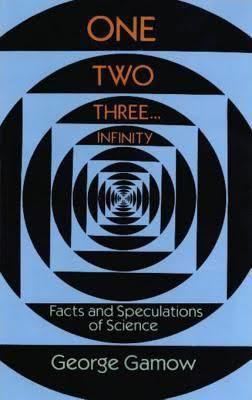8.4 /10 1 Votes8.4
Country United States Subject Science, mathematics Pages 340 pp. Originally published 1947 Genre Science | 4.2/5 Goodreads Language English Media type Print ISBN 978-0486256641 | |||||||||||||||||||||||||||||||||
 | ||||||||||||||||||||||||||||||||||
Similar George Gamow books, Science books, Astrophysics books | ||||||||||||||||||||||||||||||||||
One two three infinity book trailer by anoop kalra
One Two Three... Infinity: Facts and Speculations of Science is a popular science book by theoretical physicist George Gamow, first published in 1947, exploring some fundamental concepts in mathematics and science, but written at a level understandable by middle school students up through "intelligent layman" adults. The book is illustrated by Gamow.
Contents
One two three infinity
Overview
Beginning with an exploration of elementary numbers, the book opens with a description of the "Hottentots" (Khoikhoi), said to have words only for "one", "two", "three", and "many", and builds quickly to explore Georg Cantor's theory of three levels of infinity—hence the title of the book. It then describes a simple automatic printing press that can in principle (given enough paper, ink, and time) print all the English works that have ever been, or ever will be, printed (a more-systematic version of the infinite monkey theorem). The author notes that if all the atoms in the Universe, as known in Gamow's time, were such printing presses working in parallel "at the speed of atomic vibrations" since the beginning of known time, only an infinitesimal fraction of the job could have yet been completed.
Gamow explores number theory, topology, spacetime, relativity, atomic chemistry, nuclear physics, entropy, genetics, and cosmology.
Reception
Science writer Willy Ley praised Gamow's book, describing it as an "admittedly rare ... book which entertains by way of instruction." Kirkus Reviews declared it "a stimulating and provocative book for the science-minded layman". Theoretical physicist Sean M. Carroll credited One Two Three... Infinity with setting the trajectory of his professional life. Cognitive scientist Steven Pinker read the book as a child, and has cited it as contributing to his interest in popular science writing. Astrophysicist and science popularizer Neil deGrasse Tyson identified One Two Three... Infinity as one of two books which had the greatest impact on him, the other being Edward Kasner and James Newman's Mathematics and the Imagination.
